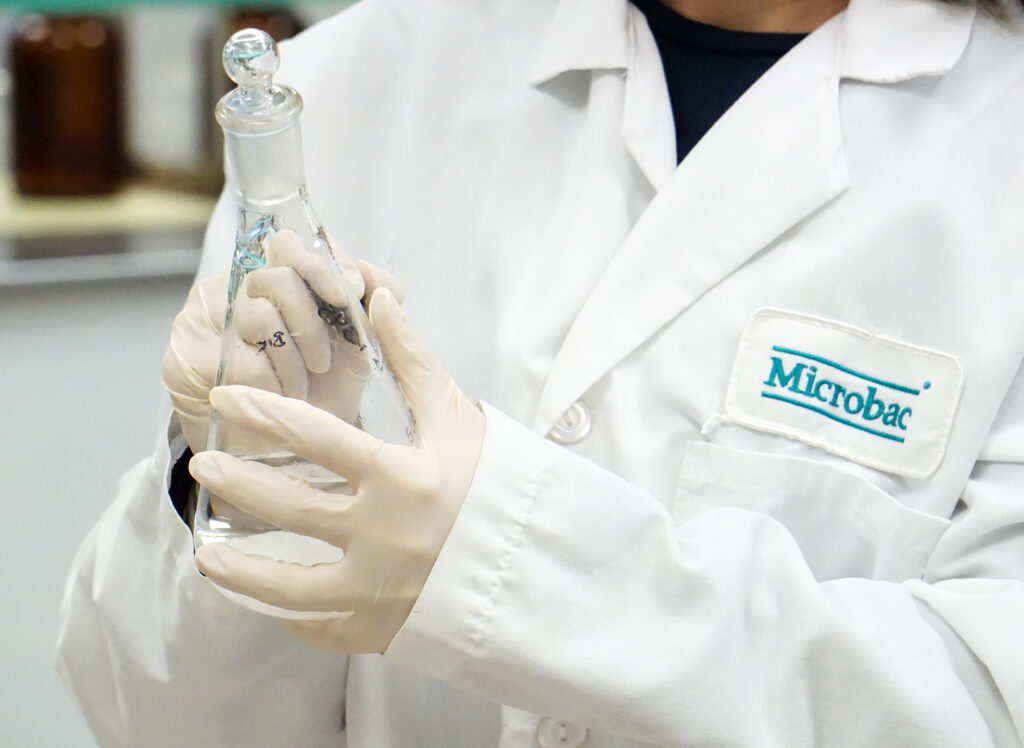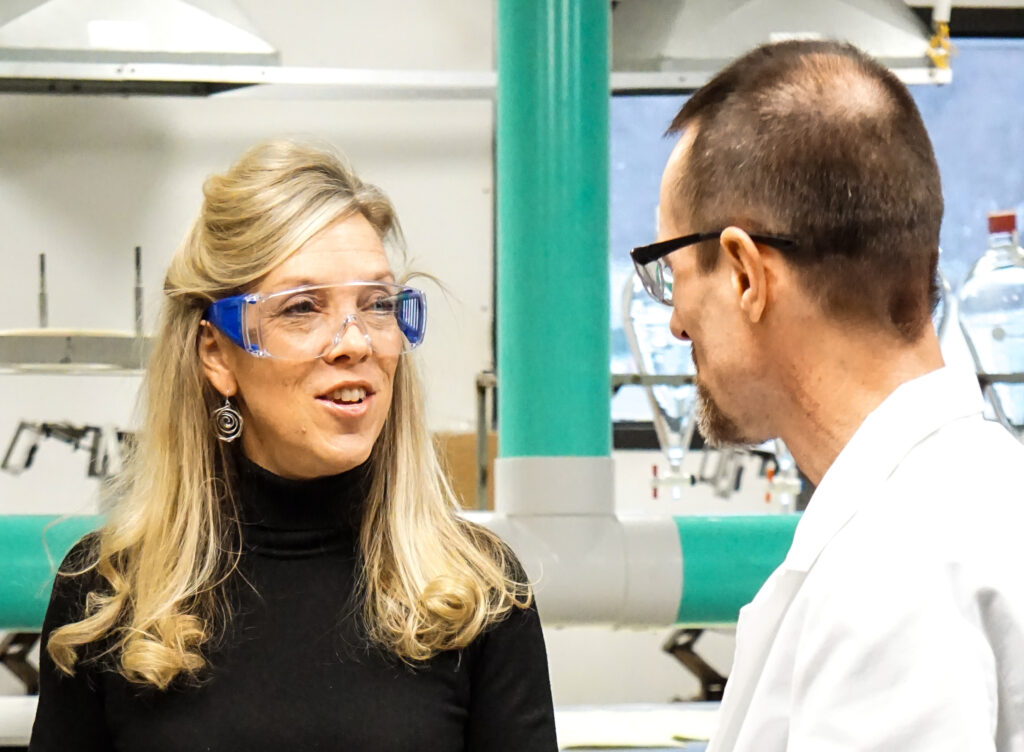Forever Chemicals: Addressing the Complex Challenges and Issues Posed by PFAS
Nothing lasts forever . . . This popular and oft-used adage loses its meaning when it comes to per- and polyfluoroalkyl substances (PFAS), a group of man-made chemicals, which gained widespread use globally in the 1940s and 1950s. Decades later, these substances were ominously dubbed “forever chemicals” after extensive research studies revealed their ability to accumulate in the human body, persist in the environment and resist degradation in nature.
Commonly referred to as “stain-repellent compounds” or “highly fluorinated chemicals,” these substances are resistant to grease, oil, water, and heat, propelling their use in a diverse sphere of industrial applications and commercial household products, including carpet protectant, paint, water-resistant apparel, and fire-fighting foams. In the United States, certain PFAS are authorized by the Food and Drug Administration (FDA) for limited use in cookware, food packaging, and food processing.
The FDA estimates there are nearly 5,000 types of long-chain and short-chain PFAS belonging to different categories and classes.1 The Environmental Protection Agency (EPA) currently allows more than 600 PFAS to be sold or imported into the U.S.2 Two of the better known, or infamous, PFAS are perfluorooctanoic acid (PFOA) and perfluorooctanesulfonic acid (PFOS), which were most notably used to make TeflonTM non-stick wares andScotchgardTM stain repellants, respectively, in the U.S. During the “Mad Men” era of the 1960s, the benefits of these high-tech brands were promoted in a barrage of print and television advertising campaigns. Damaging and unnerving PFAS investigations, however, began to emerge in the 1970s and 1980s, drawing public attention to the potential hazards of these chemicals.
In 2006, following several years of litigation over the adverse effects of PFAS on human health and the environment, the EPA and eight U.S. chemical manufacturers, including 3M and DuPont, agreed to voluntarily phase out the use of PFOA and PFOA-related compounds by 2015. The discontinued chemicals were replaced with a “new generation” of PFAS, such as GenX and perfluorobutanesulfonic acid (PFBS), which were designed, according to manufacturers, to be less environmentally persistent. While PFOA and PFOS are no longer made in the U.S., they are still circulating throughout the country via international imports, especially from China, the nation’s largest trading partner and now the world’s largest emitter of PFOA.3
The staggering ubiquity and longevity of “forever chemicals” have justifiably triggered significant public health and environmental alarms among epidemiologists, governments, consumer activists, environmentalists, and health regulators, both here and abroad.
Avoidance is Futile

PFAS can be found in the air, soil, and water, making it virtually impossible for most individuals to avoid exposure to them on a daily basis. Scores of studies have found PFAS in blood samples of humans and animals worldwide.4 A2007 investigation conducted by the Centers for Disease Control and Prevention (CDC) found that 99.7% of Americans over the age of 12 had trace amounts of PFOA in their blood, while 99.9% had PFOS.5 More recent studies suggest blood levels of PFOA and PFOS have been decreasing since some U.S. chemical manufacturers started phasing out the production of these PFAS well over a decade ago.6
There are a number of ways in which individuals could be exposed to PFAS. The most common sources include the following:6
- Drinking water from public water and private water systems, typically localized and associated with a release from a specific facility (e.g., manufacturer, processor, landfill, wastewater treatment, or facilities using PFAS-containing firefighting foams);
- Consumption of plants and meat from animals, including fish that have accumulated PFAS;
- Consumption of food that came into contact with PFAS-containing products (e.g., some microwaveable popcorn bags and grease-resistant papers);
- Use of, living with, or otherwise being exposed to commercial household products and indoor dust containing PFAS, including stain- and water-repellent textiles (including carpet, clothing and footwear), non-stick products (e.g., cookware), polishes, waxes, paints, and cleaning products;
- Employment in a workplace that produces or uses PFAS, including chemical production facilities or utilizing industries (e.g., chromium electroplating, electronics manufacturing, or oil recovery)
The Agency for Toxic Substances and Disease Registry (ATSDR), a division of the U.S. Department of Health and Human Services (HHS), states that unborn babies, infants, and young children are susceptible to PFAS exposure. 8
The Atlanta-based agency notes that some PFAS have been shown to cross the placenta of unborn children and enter umbilical cord blood. Furthermore, newborns can be exposed to PFAS through breast milk or formula made with water that contains PFAS. ATSDR cautions that hand-to-mouth behaviors place infants and young children at increased risk of exposure to a variety of contaminants as a result of the time they spend crawling and playing on the floor. If surfaces were treated with PFAS-containing stain protectants, toddlers may be exposed through these behaviors.8
Despite the rapt attention given to PFAS over the past few decades, school is essentially still out surrounding the health effects of these substances. Current science, however, suggests that the bioaccumulation of certain PFAS may cause serious health conditions.9
Studies of PFOA and PFOS, the most closely scrutinized and researched PFAS, indicate that these substances can cause reproductive and developmental defects, liver and kidney damage, immunological effects in laboratory animals, and may cause the development of tumors.6 The International Agency for Research on Cancer, the cancer research arm of the World Health Organization (WHO), classifies PFOA as a Group 2B carcinogen, or “possibly carcinogenic to humans.”
The EPA and ASTDR both report that the most consistent health effect from PFAS is increased cholesterol levels among exposed populations.8
Dark Waters

PFAS are manifest in the air we breathe, the food we eat, and the water we drink. In recent years, the growing prevalence of forever chemicals in drinking water and their possible effects on human health have garnered considerable attention in the U.S. and around the globe.
PFAS, in a frequently cited 2016 research study, were found in the drinking water sources of more than 16 million Americans in 33 states.9 However, a number of independent environmental consortiums, such as the Environmental Working Group (EWG), state that PFAS-contaminated drinking water is far more prevalent in communities across the nation. To support its contention, EWG, a non-profit and non-partisan organization based in Washington, D.C., has conducted numerous environmental studies and surveys that have been cited in many national publications and media outlets.
Recently, EWG and the Social Science Environmental Health Research Institute at Northeastern University identified nearly 1,500 PFAS contaminated sites in 49 states, many of which are current and former military bases.10 In order, the states most impacted by PFAS contamination are Michigan, California and New Jersey.
Faced with such daunting data and information, some researchers and environmental watchdog groups believe that various PFAS are likely detectable in virtually all the nation’s major water supplies, particularly those that draw drinking water from surface sources, such as rivers and lakes.11
Inside and outside of scientific circles, conversations surrounding the efficacy of water treatment technologies to remove PFAS from drinking water have been conducted in meeting places ranging from private homes to industrial complexes.
A limited number of water filtration systems, including activated carbon adsorption and reverse osmosis, have been found to be effective in removing PFOA and PFOS from drinking water.12, 13
These systems can be employed in drinking water treatment facilities, hospital water systems, individual buildings, or even in homes at the point-of-entry, where water enters the home, or the point-of-use, such as in a kitchen sink or a shower. When researching a filtration system for home use, it is highly recommended to choose a solution that has been certified by a third-party expert, such as NSF International.
Families and individuals who are highly concerned about the presence of PFAS in their home tap water are advised not the boil it to minimize contamination risks. Boiling water will only concentrate PFAS chemicals, according to various technical literature.14
Action Plan

Because of the serious health issues linked to PFAS in drinking water, the EPA established a non-enforceable health advisory for PFOA and PFOS at 70 parts per trillion in 2016.15 Many scientists and environmental groups, however, derided the measurement, asserting it is too high. Since that time, a number of states have set or proposed limits or guidelines for PFAS in drinking water, including California, Connecticut, Massachusetts, Michigan, Minnesota, New Hampshire, New York, North Carolina, and Vermont.16
After decades of criticism from many quarters alleging it was not aggressive enough in addressing the health and environmental implications posed by PFAS, the EPA announced the roll-out of an action plan in 2019 to reduce PFAS risks to the public. The far-reaching strategic plan calls for a number of measures, including:6
- Initiating steps to evaluate the need for a maximum contaminant level (MCL) for PFOA and PFOS;
- Developing groundwater cleanup recommendations for PFOA and PFOS at contaminated sites;
- Developing toxicity values or oral reference doses for GenX chemicals and PFBS;
- Utilizing enforcement tools to address PFAS exposure in the environment and assist states in enforcement activities;
- Developing new tools and materials to communicate about PFA;
- Expanding toxicity information for PFAS; and
- Promulgating Significant New Use Rules (SNURs) that require EPA notification before chemicals are used in new ways that may create human health and ecological concerns
Late last year, in an addendum to its action plan, the EPA issued an interim strategy for addressing potential discharges of PFAS as part of the federal National Pollutant Discharge Elimination System (NPDES) permitting process. The strategy recommends that federal NPDES permit writers consider incorporating requirements for monitoring and control of PFAS into wastewater permits when PFAS are expected to be present. The strategy calls for monitoring to begin after EPA approves detection methods for PFAS in waste streams, which is expected in 2021.
The EPA strongly endorses regular sampling and analytical testing to assess PFAS occurrences and exposures in drinking water systems. To assist states, agency partners, local communities, tribes, industry groups, and other stakeholders with these important responsibilities, the agency provides a wealth of technical documents, guides, and briefs.7
Due to the widespread use of PFAS, the agency warns that many utensils (e.g., polymer containers) commonly utilized in sampling programs and laboratory settings contain PFAS, such as polytetrafluoroethylene (i.e., Teflon). Consequently, such utensils cannot be used during sampling and analysis. The agency also advises sampling technicians not to bring consumer products that may contain PFAS to sampling sites.
By following these protocols, the EPA maintains that opportunities for sample contamination can be minimized and aid stakeholders in accruing quality data. Within its aforementioned Action Plan, the EPA reinforces its long-running commitment to the development of advanced analytical methods for PFAS through the allocation of requisite resources.
Since 2009, the federal agency has developed, validated and published three methods – 537, 537.1 and 533 — to support the analysis of 29 PFAS chemicals in drinking water.7 The methods were developed and validated for the analysis of finished drinking water (i.e., potable water) from both groundwater and surface water sources. Updated and released in 2018, EPA Method 537.1 includes the GenX chemical, hexafluoropropylene oxide dimer acid (HFPO-DA). Elevated levels of this PFAS have been detected in surface water, air, and treated drinking water in the U.S. and Europe.
Expertise Counts

When addressing the complex challenges and issues posed by PFAS in drinking water, it is imperative to work with recognized experts such as Microbac Laboratories, Inc., one of the nation’s largest independent testing providers. Microbac, through its Marietta, OH, laboratory, provides local and state municipalities, wastewater treatment plants, military facilities, engineering firms, utility companies, and other parties with expert PFAS testing in potable and non-potable water.
“We are ready and able to help customers with their PFAS testing needs,” states Larry Gwinn, Managing Director of Microbac’s Ohio Valley Division. “With new analytical instrumentation, qualified analysts, and project experience, we can test for this complex group of forever chemicals in various water sources and provide our customers with the highest quality data.”
Microbac is NELAP (National Environmental Laboratory Accreditation Program) certified for EPA methods 537 and 537.1. In addition, the testing provider is DoD ELAP (Department of Defense Environmental Laboratory Accreditation Program) accredited for modified EPA method 537 following rigorous DoD protocol. Contact us to learn how our dedicated and skilled team can support your PFAS testing needs.

References:
- FDA. Per and Polyfluoroalkyl Substances (PFAS) Retrieved from https://www.fda.gov/food/chemicals/and-polyfluoroalkyl-substances-pfas
- AWWA. Per-and Polyfluoroalkyl Substance (PFAS). Retrieved from https://www.awwa.org/Portals/0/AWWA/ETS/Resources/Per-andPolyfluoroalkylSubstances(PFAS)-OverviewandPrevalence.pdf?ver=2019-08-14-090234-873
- The Intercept. 2016. The Teflon Toxin Goes to China. Retrieved from https://theintercept.com/2016/09/15/the-teflon-toxin-goes-to-china/
- ATSDR. Per- and Polyfluoroalkyl Substances (PFAS) and Your Health. Retrieved from https://www.atsdr.cdc.gov/pfas/pfas-blood-testing.html
- Environmental Health Perspectives. 2016. Polyfluoroalkyl Chemicals in the U.S. Population: Data from the National Health and Nutrition Examination Survey (NHANES) 2003–2004 and Comparisons with NHANES 1999–2000. Retrieved from https://www.ncbi.nlm.nih.gov/pmc/articles/PMC2072821/.
- EPA. EPA’s Per- and Polyfluoroalkyl Substances (PFAS) Action Plan. Retrieved from https://www.epa.gov/sites/production/files/2019-02/documents/pfas_action_plan_021319_508compliant_1.pdf
- EPA. PFAS: Methods and Guidance for Sampling and Analyzing Water and Other Environmental Media. Retrieved from https://www.epa.gov/sites/production/files/2020-01/documents/pfas_methods-sampling_tech_brief_7jan2020-update.pdf
- ATSDR. PFAS: An Overview of the Science and Guidance for Clinicians PFAS on Per- and Polyfluoroalkyl Substances (PFAS). Retrieved from https://www.atsdr.cdc.gov/pfas/docs/ATSDR_PFAS_ClinicalGuidance_12202019.pdf
- Hu XC, Andrews DQ, Lindstrom AB, Bruton TA, Schaider LA, Grandjean P, Lohmann R, Carignan CC, Blum A, Balan SA, Higgins CP, Sunderland EM. Detection of Poly- and Perfluoroalkyl Substances (PFASs) in U.S. Drinking Water Linked to Industrial Sites, Military Fire Training Areas, and Wastewater Treatment Plants. Environ Sci Technol Lett. 2016 Oct 11; 3(10):344-350.
- EWG. Mapping the PFAS Contamination Crisis: New Data Show 1,477 Sites in 49 States. Retrieved from https://www.ewg.org/interactive-maps/2019_pfas_contamination/
- Salon. 2020. Virtually All Major U.S. Drinking Water Sources Likely Contaminated with PFAS. Retrieved from https://www.salon.com/2020/02/02/virtually-all-major-us-drinking-water-sources-likely-contaminated-with-pfas_partners
- EPA. Reducing PFAS in Drinking Water with Treatment Technologies. Retrieved from https://www.epa.gov/sciencematters/reducing-pfas-drinking-water-treatment-technologies
- NSF. PFOA/PFOS in Drinking Water. Retrieved from https://www.nsf.org/consumer-resources/water-quality/drinking-water/perfluorooctanoic-acid-and-perfluorooctanesulfonic-acid-in-drinking-water
- NRDC. Toxic Drinking Water: The PFAS Contamination Crisis. Retrieved from https://www.nrdc.org/sites/default/files/toxic-drinking-water-pfas-contamination-fs.pdf.